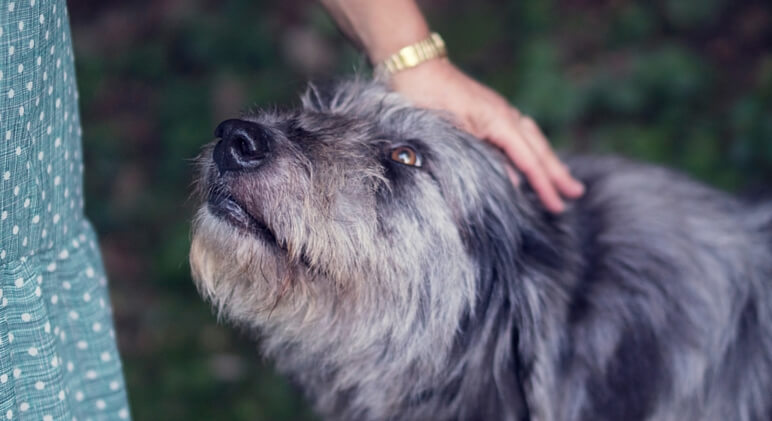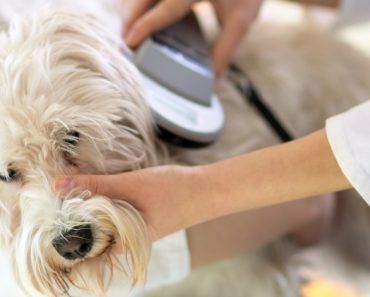I don’t know about you, but I can’t even count the number of times in a day that my pups make me smile. To put it simply, that’s pretty much what therapy dogs do. They make people happy! By visiting with a person, providing companionship, and allowing people to pet and hug them, therapy dogs create a sense of peace, calmness, joy, and distraction for people facing various challenges.
Not only do therapy dogs encourage happy smiles, they also benefit mental and physical health. Studies have shown many patients visited by therapy dogs have an increase in mood and happiness, along with a decrease in depression, anxiety, and blood pressure. That’s because their visits increase the release of our natural feel-good chemicals — like dopamine, serotonin, and oxytocin — and decrease our main stress hormone cortisol. That’s pretty powerful stuff if you ask me!
Who Does a Therapy Dog Visit?
Therapy dogs visit people in places like hospitals, nursing homes, pediatric facilities, and substance treatment centers. They also visit children in certain school and library reading programs. Dogs are trained to be “reading tutors.” The concept, while simple, is pretty amazing. First, the kids and the dogs pick out books. Then, the children read to the dogs in a non-threatening, non-judgemental environment. It has been shown to improve reading and communication skills, as well to stimulate an enjoyment for reading. Reading Education Assistance Dogs (R.E.A.D.) is the first program like this and now has more than 3,500 registered therapy teams around the globe.
Can My Dog be a Therapy Dog?
Many dogs can be trained to be therapy dogs. The training is not as rigid as a service dog since they don’t have to learn particular tasks. Any breed — purebred or mixed — can be a therapy dog. The only thing is the dog must be socialized, friendly, and patient. In other words, they must be good canine citizens!
Therapy dogs need to have basic social and obedience skills, have an even temperament that can be trusted, and shouldn’t be easily distracted or startled. Remember, in hospital and nursing home settings there are many distractions and noises that a dog may not understand.
Additionally, dogs must be healthy and their vaccinations must be up-to-date.
What Type of Training Does My Dog Need?
If you think you would like to team up with your dog and volunteer as a therapy dog team, the best place to start is a therapy dog training group. They’ll evaluate your dog and see if he/she is a good candidate for volunteer service. After that, they’ll plan out your training. Click here for a list of approved therapy dog training organizations that are recognized by the American Kennel Club (AKC). After successfully completing an approved training program, the AKC offers a follow-up AKC Therapy Dog Title. There are multiple levels of title depending on the experience of the therapy dog.









